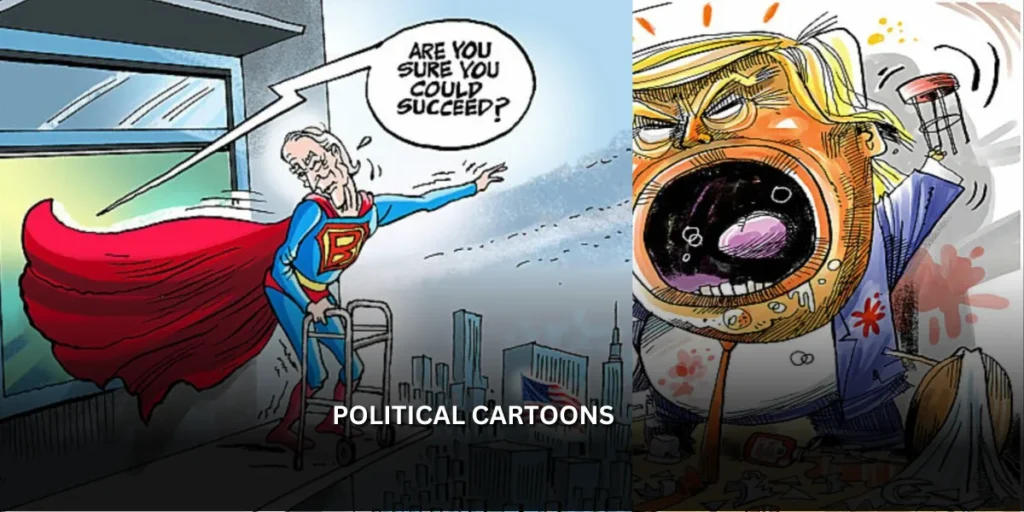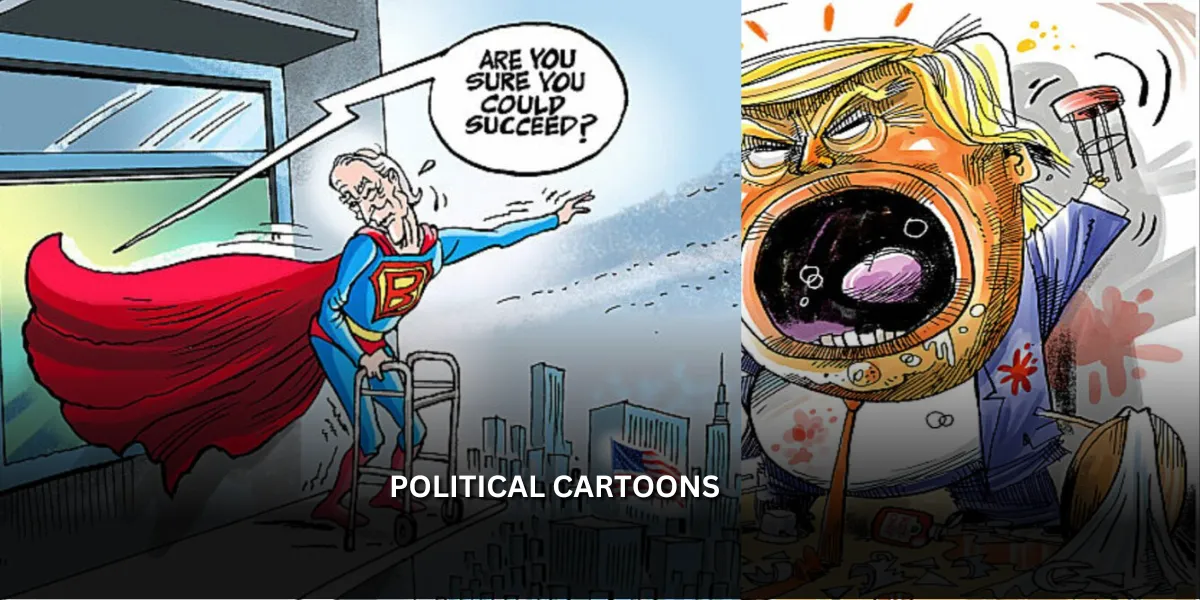
Political Cartoons: A Punchy Commentary on Power
Political Cartoons : Political cartoons use humor and exaggeration to critique current events and political figures. Learn about their history, impact, and how to interpret them.
What is a political cartoon?
On July 17, 2024, as you scroll through the newspaper or browse your favorite news website, you might come across a sharp image that makes you chuckle or think twice. This is a political cartoon, a powerful blend of art and commentary that uses humor, exaggeration, and symbolism to critique current events and political figures.
A History of Jabs: The Evolution of Political Cartoons
Political cartoons have a long and fascinating history. Early examples can be traced back to ancient Egypt and Greece, where satirical imagery was used to poke fun at authorities. However, the art form truly flourished in the 18th century in Europe, with artists like William Hogarth using their work to criticize social and political issues.
The rise of the printing press in the 19th century played a crucial role in the development of political cartoons. Newspapers started including editorial cartoons, which provided a powerful platform for artists to express their opinions and challenge the status quo. These cartoons often used strong symbolism and caricature, exaggerating physical features of politicians to make them more identifiable and easier to ridicule.
The Power of Punchlines: How Political Cartoons Work
Political cartoons rely on a variety of elements to deliver their message effectively. Let’s take a closer look at some key ingredients:
- Symbolism: Cartoonists often use recognizable symbols to represent complex ideas. For example, an elephant might symbolize the Republican party in the United States, while a donkey represents the Democrats.
- Satire: This is the use of humor, irony, or exaggeration to criticize something. Political cartoons often employ satire to expose hypocrisy, corruption, or other flaws in the political system.
- Caricature: By exaggerating physical features, cartoonists can make a politician easily recognizable and highlight specific personality traits. A big nose might represent someone who is deceitful, while a furrowed brow could signify someone who is constantly worried.
Decoding the Message: Understanding the Context
To fully appreciate a political cartoon, it’s important to understand the context in which it was created. Consider these questions:
- What current event or issue is the cartoon referencing?
- Who are the characters depicted, and what do they represent?
- What message is the cartoonist trying to convey?
By keeping these questions in mind, you can become a more astute reader of political cartoons and appreciate the often layered commentary they offer.
More Than Just Funny: The Impact of Political Cartoons
Political cartoons are far more than just a source of amusement. They play a vital role in society by:
- Highlighting social and political issues: Cartoonists can bring attention to important problems that might otherwise be ignored. They can spark conversations about issues like poverty, inequality, or environmental degradation.
- Sparking debate and influencing public opinion: By offering pointed commentary, political cartoons can encourage people to think critically about current events and challenge existing power structures. This can ultimately lead to positive social change.
Facing Censorship and Challenges
Despite their positive impact, political cartoons can be controversial. Throughout history, cartoonists have faced censorship and persecution for their work. Even today, some governments and powerful individuals try to silence critical voices. Additionally, with the rise of social media, the spread of misinformation and “fake news” poses a new challenge for readers of political cartoons.
Cartooning the Future: Political Cartoons in the Digital Age
The internet has revolutionized political cartoons. Online platforms and social media have given cartoonists a wider audience and new ways to express themselves. Animated cartoons, GIFs, and even interactive formats are becoming increasingly popular. However, the digital age also presents challenges. The sheer volume of information online can make it difficult for people to distinguish between legitimate political cartoons and biased or misleading content.
Conclusion
Political cartoons are a powerful tool for social commentary and political critique. By understanding their history, how

